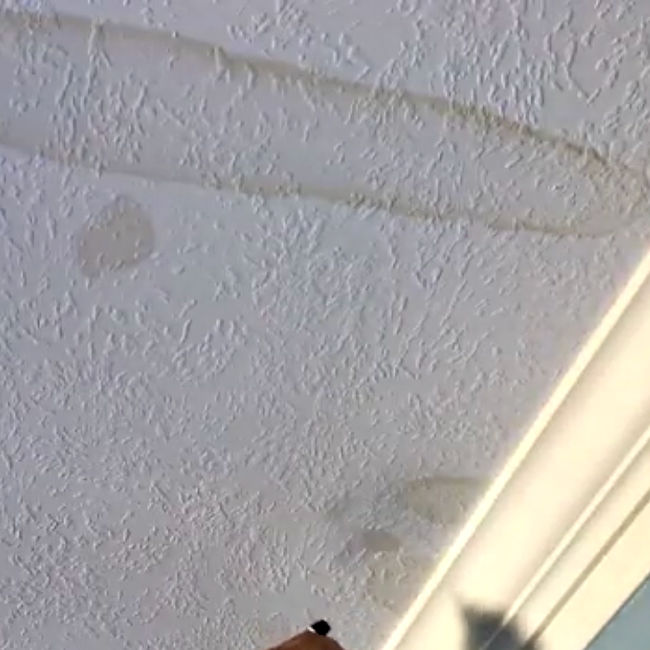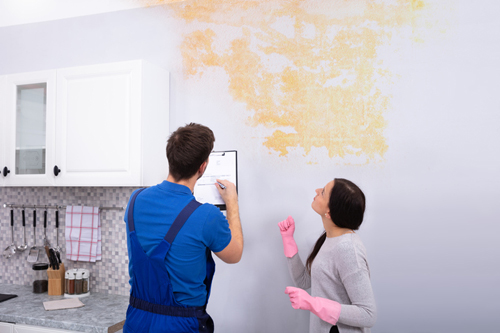How to Detect and Repair Stains from Water Efficiently
Visit The Following PageAlmost everyone has their own individual idea with regards to How to Find and Repair Water Leaking in the Wall.

Water discolorations on walls are not enjoyable to the eyes. Sometimes it appears practically unpreventable to experience water spots on wall surfaces in homes.
Homeowners living in damp areas frequently deal with the worry of water spots on wall surfaces. With accurate and all-around info on the causes of water stains and timely fixing procedures, you will certainly constantly be an action in advance of such events.
3 Common Causes of Water Stains on Walls
In contrast to popular belief, water discolorations on wall surfaces do not constantly come from poor structure products. There are several reasons for water discolorations on walls. These consist of:
Poor Drain
This will certainly prevent water from seeping right into the wall surfaces. This web links to too much dampness that you discover on the walls of your building.
The leading cause of wet walls, in this case, can be a poor water drainage system. It can additionally be because of poor management of sewer pipelines that go through the building.
Damp
When warm damp air meets with completely dry cool air, it triggers water droplets to form on the wall surfaces of structures. When there is heavy steam from cooking or showers, this occurs in kitchen areas and also bathrooms. The water droplets can stain the bordering walls in these parts of your residence as well as infect other areas.
Damp or condensation impacts the roof covering as well as walls of buildings. When the wall is damp, it creates an appropriate atmosphere for the growth of microorganisms and fungi.
Pipeline Leaks
A lot of homes have a network of pipes within the wall surfaces. This makes certain that the pipelines are faraway from the reach of destructive rats. It constantly enhances the viability of such pipes, as there is little oxygen within the wall surfaces. This discourages rust.
A downside to this is that water leakage impacts the wall surfaces of the structure as well as creates prevalent damage. An indicator of faulty pipes is the look of a water tarnish on the wall surface.
Water Spots on Wall Surface: Fixing Tips
When dealing with water discolorations, homeowners would usually desire a quick fix. They would soon realize this is counterproductive as the water stains persist. Here are a few useful tips that will certainly lead you in the fixing of water discolorations on walls:
Pro Tip
A houseplant in your house likewise boosts its humidity. So, if your home is already damp, you might wish to present houseplants with very little transpiration. An example of ideal houseplants is succulents.
Final thought
Although no one intends to have water discolorations on walls in their house, it can happen to the most effective of us. This post gives you take advantage of, as you now understand how to manage this problem if it does happen.
It is always best to recruit expert services to aid take care of the damages in your house.
Often it appears nearly inevitable to experience water discolorations on wall surfaces in homes.
In contrast to preferred belief, water spots on wall surfaces do not always stem from inadequate building materials. There are numerous causes of water spots on wall surfaces. The water beads can discolor the bordering wall surfaces in these parts of your house and also spread to other areas.
Below are a few helpful pointers that will assist you in the fixing of water stains on walls:
CHECKING FOR WATER DAMAGE
Water damage can be costly, and it may begin before you even notice the first signs of trouble. Water damage can cause mold and mildew in your walls and floors, which can create an abundance of health concerns for your family. It can also lead to costly repairs of various appliances and general home fixtures. To avoid the pricey consequences of water damage, here are Warner Service’s top 5 places you should check:
The walls – The easiest place to spot the beginnings of water damage is on the walls and ceilings of your home. If water damage is present, there will most likely be water stains, especially around the windows and doorframes, and/or cracks in the drywall. If a stain looks unusual (discolored to brown, black or gray, raised texture), has a swollen appearance or is soft to the touch, contact a professional immediately. The pipes – To avoid water damage, consistently check the pipes in your kitchen (especially the dishwasher and ice maker), bathrooms, laundry room (specifically washing machines) and basement for corrosion, leaks and water stains. Pay special attention to where the pipes connect in your home and the location of caulking around the bathroom fixtures, including toilets, sinks, showers and tubs. Missing or loose caulking and grout could be signs of leaking water. This seepage can also quickly cause mold and rust, so double check your water heater and tank for wet spots on the floor. The floor – Water damage is very easy to spot on the floor. Look for any warping or buckling of the material, especially in the basement. If your home has wood flooring, look for bright white or dark stains. If your home has carpeting, keep it dry and clean. A damp carpet that smells of mold could cause water damage and health problems. To avoid this, consider installing floor pans under your appliances to help prevent damages from small, slow and undetected leaks. The basement and attic – If your basement or attic smells odd check for mold and mildew around the area, especially the valley where the roof meets. While you are inspecting those areas, check for wall cracks, floor stains, rust and dampness in the insulation. If you live in a colder and/or rainier climate, perform routine checks for water damage from melting snow or ice and rain. The exterior – Check the roof for damaged flashing and missing, cracked or curled shingles. There should also be no standing water anywhere outside your home. This could be caused by puddles, leaky rain gutters or hoses, poor drainage, or short gutter spouts. Invest in a sump pump system or water flow monitoring system, and perform routine maintenance on these outdoor appliances to avoid indoor water damage.

As a person who reads on How to Find and Repair Water Leaking in the Wall, I think sharing that piece of content was worth the trouble. Those who liked our page if you please be sure to pass it around. Thanks for your time spent reading it.
Article